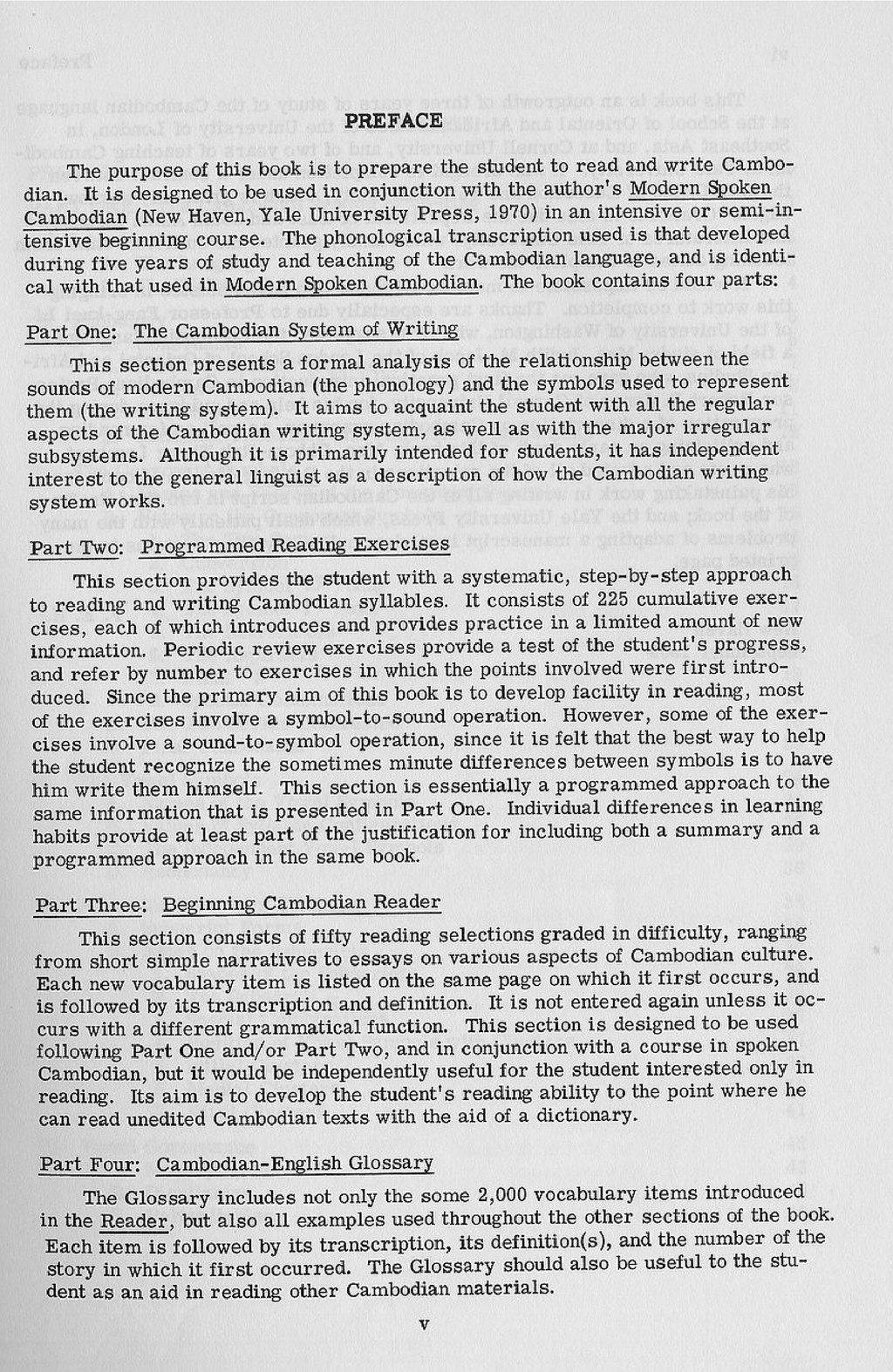PREFACE
The purpose of this book is to prepare the student to read and write Cambodian. It is designed to be used in conjunction with the author's Modern Spoken Cambodian (New Haven, Yale University Press, 1970) in an intensive or semi-intensive beginning course. The phonological transcription used is that developed during five years of study and teaching of the Cambodian language, and is identical with that used in Modern Spoken Cambodian. The book contains four parts:
- Part One: The Cambodian System of Writing
This section presents a formal analysis of the relationship between the sounds of modern Cambodian (the phonology) and the symbols used to represent them (the writing system). It aims to acquaint the student with all the regular aspects of the Cambodian writing system, as well as with the major irregular subsystems. Although it is primarily intended for students, it has independent interest to the general linguist as a description of how the Cambodian writing system works.
- Part Two: Programmed Reading Exercises
This section provides the student with a systematic, step-by-step approach to reading and writing Cambodian syllables. It consists of 225 cumulative exercises, each of which introduces and provides practice in a limited amount of new information. Periodic review exercises provide a test of the student's progress, and refer by number to exercises in which the points involved were first introduced. Since the primary aim of this book is to develop facility in reading, most of the exercises involve a symbol-to-sound operation. However, some of the exercises involve a sound-to-symbol operation, since it is felt that the best way to help the student recognize the sometimes minute differences between symbols is to have him write them himself. This section is essentially a programmed approach to the same information that is presented in Part One. Individual differences in learning habits provide at least part of the justification for including both a summary and a programmed approach in the same book.
- Part Three: Beginning Cambodian Reader
This section consists of fifty reading selections graded in difficulty, ranging from short simple narratives to essays on various aspects of Cambodian culture. Each new vocabulary item is listed on the same page on which it first occurs, and is followed by its transcription and definition. It is not entered again unless it occurs with a different grammatical function. This section is designed to be used following Part One and/or Part Two, and in conjunction with a course in spoken Cambodian, but it would be independently useful for the student interested only in reading. Its aim is to develop the student's reading ability to the point where he can read unedited Cambodian texts with the aid of a dictionary.
- Part Four: Cambodian-English Glossary
The Glossary includes not only the some 2,000 vocabulary items introduced in the Reader, but also all examples used throughout the other sections of the book. Each item is followed by its transcription, its definition(s), and the number of the story in which it first occurred. The Glossary should also be useful to the student as an aid in reading other Cambodian materials.
